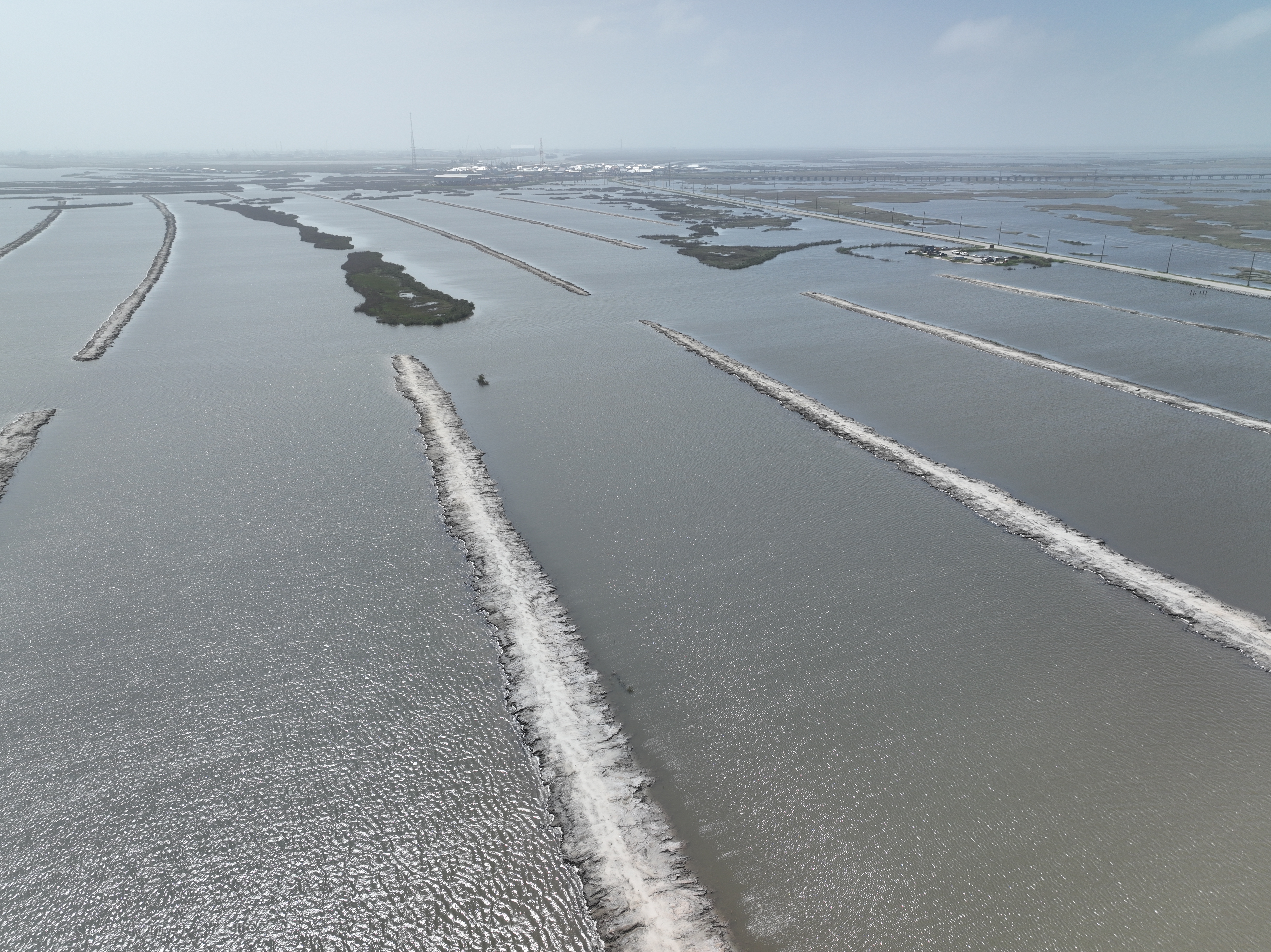
Port Fourchon, located in southern Lafourche Parish along the Louisiana Gulf Coast, serves as a critical hub for offshore oil and gas exploration and production. While significant oil and gas infrastructure benefits from protection by the expansive coastal wetlands surrounding the Port, the well-documented degradation of Louisiana's coastal wetlands threatens this natural barrier and the vital infrastructure it protects.
The Port Fourchon Terracing and Living Shoreline Project, Phases I and II, represents an innovative, nature-based solution to address these challenges. Located just north and east of Port Fourchon in the southernmost portion of the Barataria Basin, approximately two miles north of the Gulf shoreline, the project encompasses marsh terrace construction and installation of "living" shoreline features to enhance and protect coastal wetlands.
The project area is strategically positioned adjacent to critical infrastructure, bordered by Bayou Moreau, Highway 1, Louisiana Offshore Oil Port's (LOOP) Booster Station, and other essential Port facilities. This location is part of a coastal basin that unfortunately holds the distinction of having the highest annual land loss rate of all basins in Louisiana. The Barataria Basin has lost approximately 17% of its wetlands and continues to lose an average of 7,100 acres per year.
Phase I of the project's primary purpose centers on constructing earthen marsh terraces while installing living shoreline features using Natrx "Cajun Coral" oyster reef materials. This technology represents a significant innovation in coastal restoration, as it creates a "nature-based" solution where living reefs grow on and around the shoreline structure.
Approximately 87,000 linear feet of earthen terraces have been constructed in shallow open water areas that historically supported emergent marsh. Using marsh buggy and barge-mounted excavators, some of these terraces were built in linear segments to mimic historic chenier ridges. Other portions of the project were constructed in a grid pattern to maximize land construction and erosion prevention. Each terrace was built approximately 75 feet wide with a 10-foot crown and gaps between segments to allow for proper tidal exchange and marine organism access.
The living shoreline features were installed along the edges of approximately 4,000 linear feet of terraces to provide a habitat for marine organisms and help prevent erosion. Following construction, all terraces were planted with smooth cordgrass plugs, and most were planted with black mangrove seedlings.
Louisiana's coastal wetlands support an extraordinary diversity of wildlife, including birds, mammals, reptiles, amphibians, finfish, and shellfish. This project's creation of emergent marsh terraces will significantly enhance habitat conditions for these resources by increasing edge habitat, tidal flats, and emergent marsh areas.
The project will improve foraging, loafing, and nesting habitat for various coastal birds, including waterfowl, wading birds, shorebirds, colonial seabirds, and secretive marsh birds. Additionally, the terraces will enhance water quality by reducing turbidity and supporting submerged aquatic vegetation, which serves as an important food source for waterfowl and critical habitat for invertebrate and fishery resources.
Beyond its ecological value, the project provides crucial protection for critical infrastructure and communities. The enhanced wetlands will serve as a natural buffer against hurricanes and tropical storm events, protecting Highway 1, the only hurricane evacuation route from Grand Isle, along with Port Fourchon facilities, the LOOP Booster station, and surrounding marsh areas.
Both phases of this project are being constructed on property owned by ConocoPhillips, the Greater Lafourche Port Commission, and the Edward Wisner Trust, providing increased ecosystem benefits to the broader community through enhanced water quality, fish and wildlife habitat, and storm protection. Having robust marshes buffering and surrounding communities and infrastructure represents a natural method to improve overall resilience.
This ambitious undertaking represents a collaborative effort among multiple partners, including Ducks Unlimited, National Fish and Wildlife Foundation, ConocoPhillips, Edward Wisner Trust, Lafourche Parish Government, Greater Lafourche Port Commission, Chevron, the James M. Cox Foundation of Georgia, Louisiana’s Coastal Protection and Restoration Authority, Restore or Retreat, LOOP, North American Wetlands Conservation Council, the Coca-Cola Foundation, Woodside Energy, Louisiana Department of Wildlife and Fisheries, Shell, U.S. Fish and Wildlife Service, Oxy, and National Oceanic and Atmospheric Administration. Ducks Unlimited engineers are overseeing all survey, design, and construction management aspects of the project.
Phase I of the project, representing a significant milestone in Louisiana's ongoing efforts to combat coastal land loss through innovative, nature-based solutions, was completed in early 2025, while Phase II is still ong oing. Phase II seeks to enhance approximately 1,000 acres of salt marsh through the construction of 108,000 linear feet of terraces and vegetative plantings.
The Port Fourchon Terrace and Living Shoreline Project exemplifies how innovative restoration techniques can address multiple challenges simultaneously. By combining traditional earthen terrace construction with living shoreline technology, the project provides marsh stability, ensures healthy wetland presence on the landscape, and offers a replicable model for coastal resilience. This comprehensive approach demonstrates how strategic partnerships and nature-based solutions can protect both critical infrastructure and invaluable ecological resources in Louisiana's challenging coastal environment.
